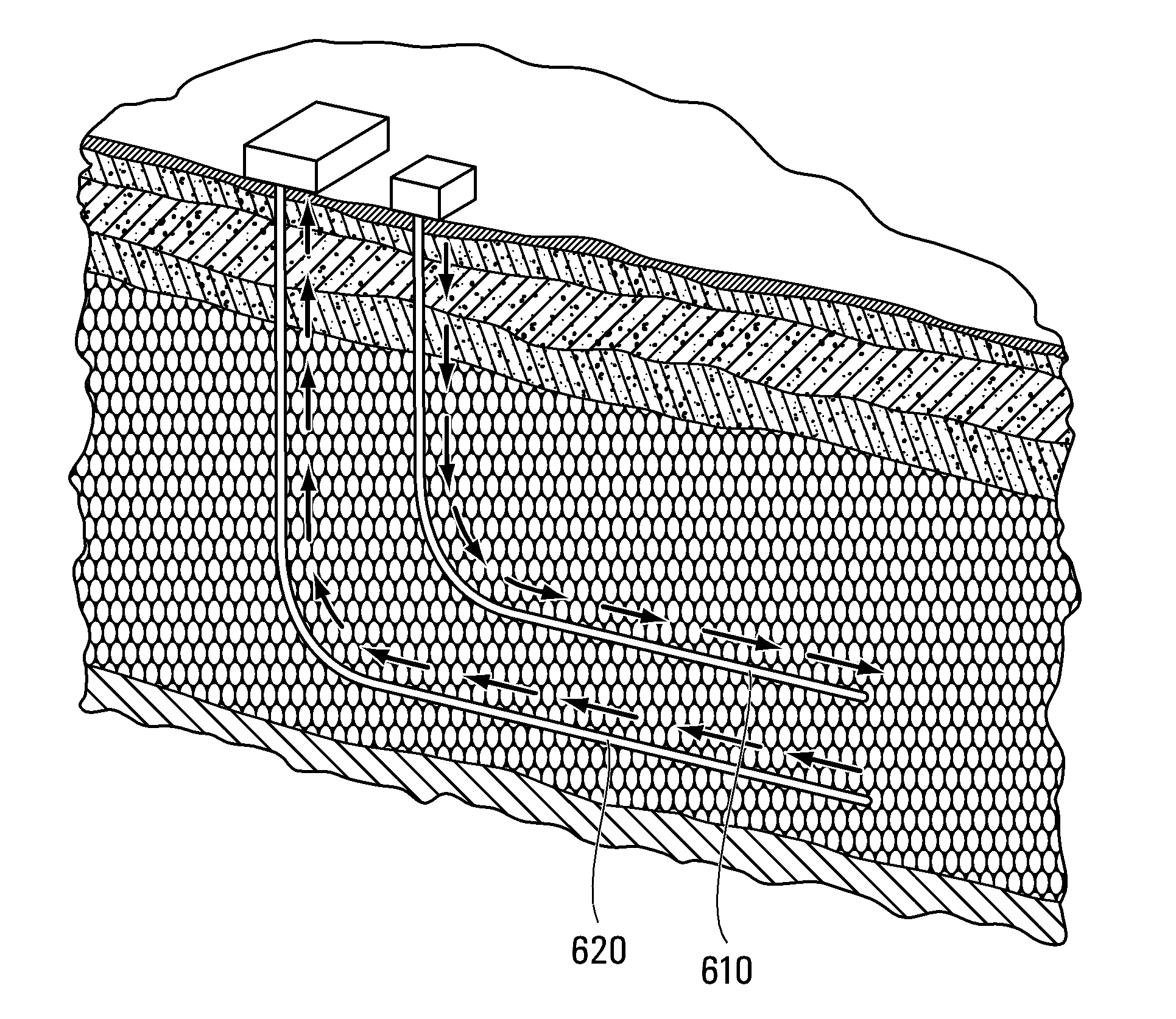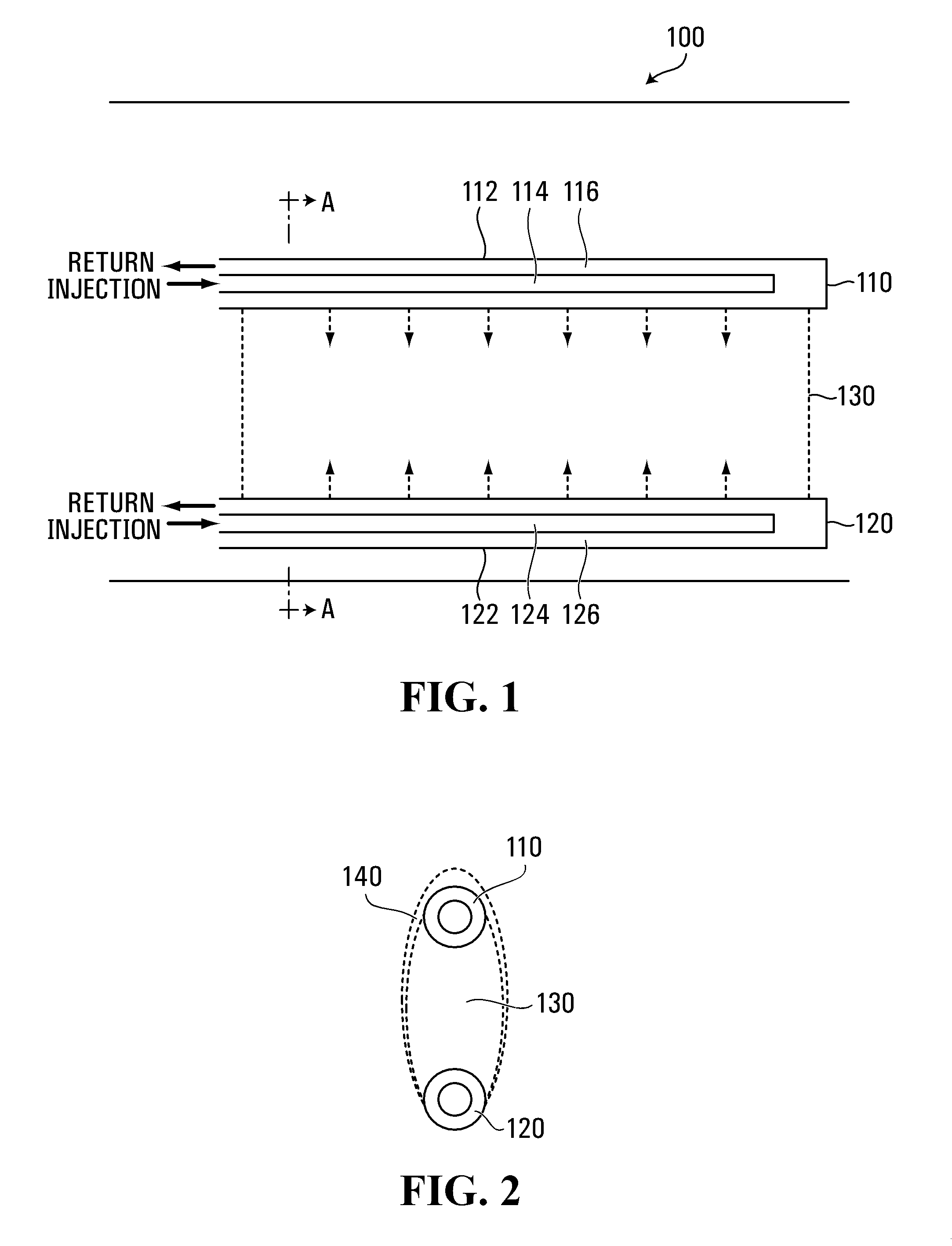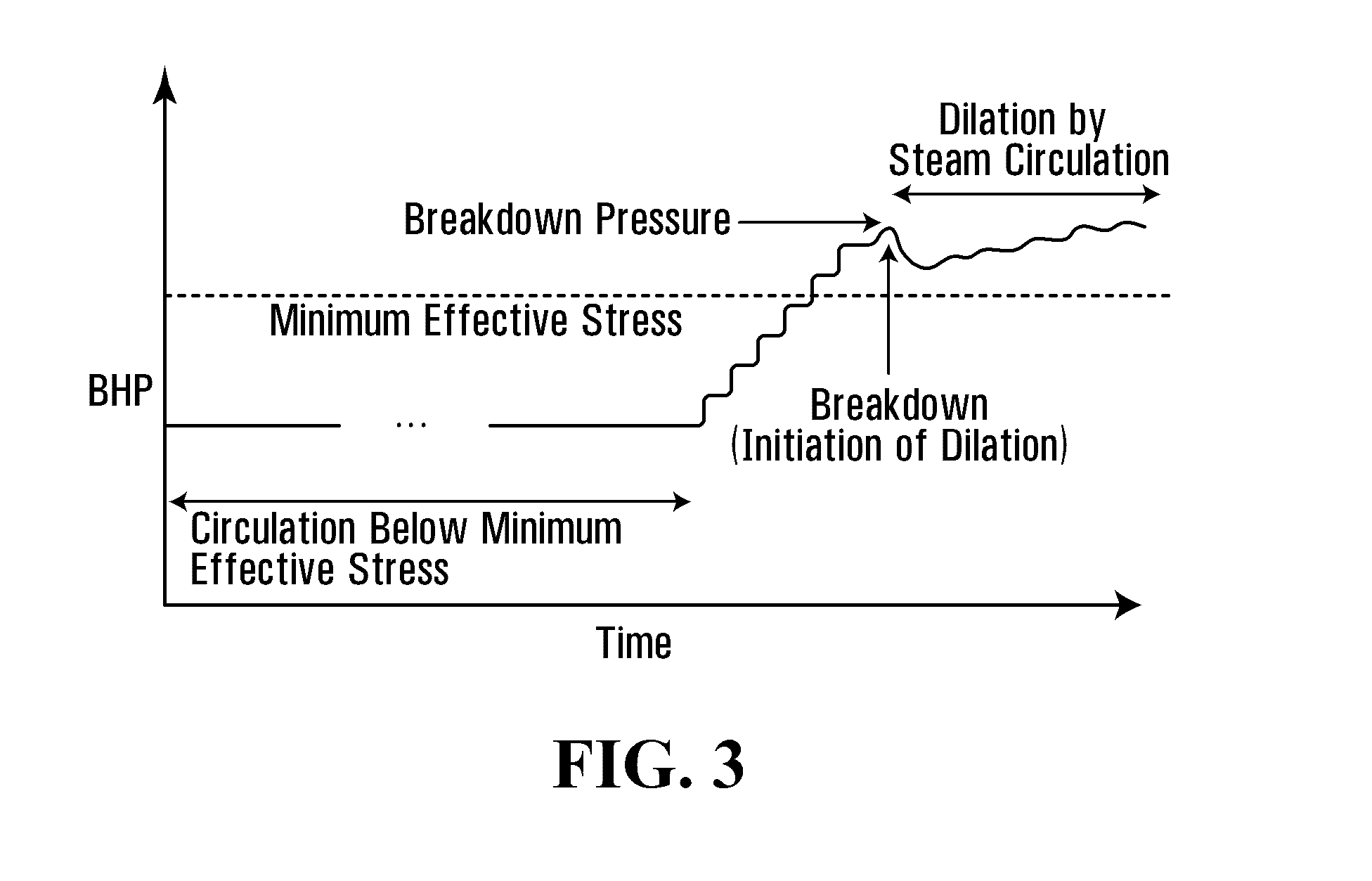Establishing communication between well pairs in oil sands by dilation with steam or water circulation at elevated pressures
a technology of communication and well pair, which is applied in the field of in situ recovery processes for hydrocarbon recovery from oil sands, can solve the problems of reducing the effectiveness of long wellbore, less uniform heating, and inapplicability of solutions, and achieves the effects of increasing steam pressure, reducing steam pressure, and increasing circulation ra
- Summary
- Abstract
- Description
- Claims
- Application Information
AI Technical Summary
Benefits of technology
Problems solved by technology
Method used
Image
Examples
example i
Standard Steam Circulation Start-Up (Comparison)
[0100]SAGD start-up was conducted with circulation of steam in each of injector and production wells at low injection pressures for three well pairs well on the same oil pad (denoted as B01) of an oil sand reservoir in Alberta, Canada. The three well pairs are denoted as B01-1, B01-2, and B01-3.
[0101]The B01 Pad was located in a thick and high reservoir quality region with a McMurray formation. The bitumen (oil sands) interval was overlain by a gas cap (˜4 m in thickness) and bottom water at the base. The production wells were at least 5 to 10 meters above the water zone at the base. The bitumen interval (30-35 meters) contained clean cross-bedded sands with an average porosity of about 33% and oil saturation of about 80%.
[0102]A standard circulation start-up procedure for SAGD start-up was used. Specifically, the well pairs were configured as illustrated in FIG. 5. Steam was injected into the inner tubing string and returns were produ...
example ii
Dilation Start-Up at B01-6
[0109]Start-up at another well pair (denoted as B01-6) on the B01 pad was conducted with water injection dilation and steam circulation dilation.
[0110]The injection and production wells were completed as illustrated in FIG. 5. In this case, the liner 612 of the injection well 610 was slotted. Further, a 6-point thermocouple coil (not shown) was inserted through inner tubing 614. The horizontal sections of the wells were about 800 m long. The vertical stress in the formation was 7.7 MPa.
[0111]The BHP and injection flow rate profiles during the start-up procedure are shown in FIGS. 7 and 8. The pressure difference between the wells at critical times is shown in FIG. 9. As shown in FIG. 9, the hydrostatic head pressure of the gas column in the well was about 3.63 MPa.
[0112]Initially, water was injected into both the injector and producer to dilate the inter-well region for 4 days. The return valves for both wells were closed so the injected water was not produ...
example iii
Dilation Start-Up at B01-5
[0121]Start-up at another well pair (denoted as B01-5) on the B01 pad was conducted with steam circulation dilation.
[0122]For the dilation start-up procedure, coiled tubing instrumentation string containing 6 thermocouple points equally spaced along the length of the liner were added to the standard well completion inside the inner tubing string of the injection well. The wells were completed as shown in FIG. 6.
[0123]The well was initially subjected to steam circulation at steady, low BHP pressures (below or about 4 MPa) for 15 days.
[0124]Steam was then circulated in the wells at substantially steady state at pressures of about 5 MPa. Nitrogen gas was injected during this stage, which allowed direct measurement of the BHP. The BHP in each well was calculated based on the wellhead casing pressure and an estimated hydrostatic pressure gradient for nitrogen at the measured casing temperature. The measured BHP and injection rates are shown in FIGS. 12, 13, 14, ...
PUM
 Login to View More
Login to View More Abstract
Description
Claims
Application Information
 Login to View More
Login to View More - R&D
- Intellectual Property
- Life Sciences
- Materials
- Tech Scout
- Unparalleled Data Quality
- Higher Quality Content
- 60% Fewer Hallucinations
Browse by: Latest US Patents, China's latest patents, Technical Efficacy Thesaurus, Application Domain, Technology Topic, Popular Technical Reports.
© 2025 PatSnap. All rights reserved.Legal|Privacy policy|Modern Slavery Act Transparency Statement|Sitemap|About US| Contact US: help@patsnap.com



